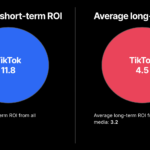In an increasingly fragmented digital landscape, marketers are ramping up their efforts to track consumer behavior across multiple platforms. According to a December 2024 survey by the Interactive Advertising Bureau (IAB) (via eMarketer), 64% of US ad buyers plan to increase their focus on cross-platform measurement in 2025. This growing emphasis reflects an urgent need for more precise attribution models as consumers engage with content across various digital touchpoints, including mobile, desktop, connected TV, and retail media networks (RMNs).
With digital advertising spend continuing to surge, brands and agencies are recognizing the critical role of data-driven insights. Traditional tracking methods, such as cookies, are gradually being phased out, compelling advertisers to explore alternative techniques. One such method making waves is digital fingerprinting, which Google began permitting on February 16, 2025. This technology allows marketers to identify and follow audience behaviors across multiple devices, offering a more holistic view of the customer journey. While this innovation promises enhanced accuracy, it also raises concerns regarding user privacy and regulatory compliance. Brands must navigate these complexities while ensuring their measurement strategies remain effective and ethical.
The increasing dominance of retail media networks (RMNs) presents a unique challenge for cross-platform measurement. RMNs allow brands to advertise directly on retailer-owned digital spaces, such as Amazon, Walmart, and Target, reaching consumers closer to the point of purchase. However, according to a January 2024 study by the Association of National Advertisers (ANA), 55% of US advertisers cite the lack of standardization across RMNs as the most significant challenge in utilizing these platforms effectively. Each retailer has its own data reporting framework, making it difficult for marketers to integrate performance metrics seamlessly across different networks. As RMNs continue to grow, industry players are advocating for standardized measurement practices that will allow for more transparent and reliable reporting.
To keep up with evolving consumer behaviors, marketers are investing heavily in more sophisticated analytics and attribution models. The ability to track and measure ad effectiveness across various platforms enables brands to allocate budgets more efficiently and optimize campaign performance. Advanced AI-powered analytics tools are emerging as a crucial asset, providing real-time insights into customer interactions and purchase intent. By leveraging machine learning algorithms, advertisers can better predict outcomes and refine their strategies to maximize engagement.
As marketers chase more comprehensive measurement solutions, the industry is shifting towards a more integrated approach to data analysis. The collaboration between advertisers, publishers, and tech providers will be crucial in establishing universal measurement standards. Additionally, regulatory changes and consumer expectations regarding data privacy will continue to shape the future of digital advertising. Brands that adapt to these changes by implementing transparent, privacy-conscious measurement practices will be better positioned to thrive in this dynamic environment.
In 2025, cross-platform measurement will be more than just a trend—it will be a necessity. Marketers who prioritize data integration, embrace new tracking technologies, and advocate for industry-wide standardization will gain a competitive edge in a marketplace driven by insights and precision.







Comments
Loading…